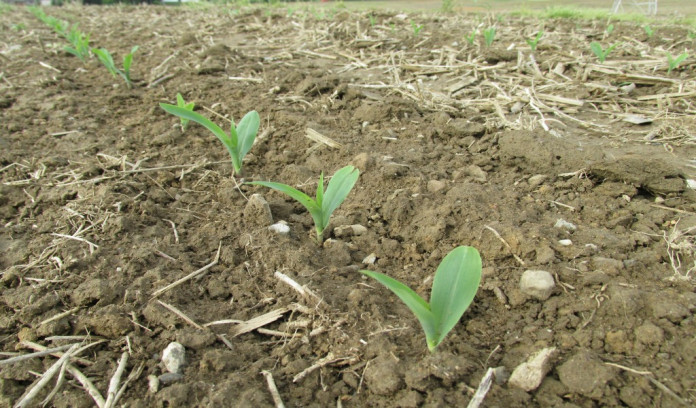The picture is getting better out the front window of the house and the side window of the pickup. Crops have improved dramatically in northeast Ohio — the dry areas got water, the cold areas got heat, and the plants are jumping out of the ground.
Meanwhile, farmers are jumping up and down in frustration at the dropping prices. The other side of improving crops is declining prices.
Crop progress
USDA agrees with the roadside surveys that the crops are getting better. The U.S. ratings, as of June 25, remained at 67 percent good and excellent this week, but Ohio was better. We were 52 percent good and excellent last week, but up to 58 this week.
That is still nothing to brag about, but it is significant improvement. We are never going to get back the days lost in the stagnant cool, wet days of May, but some more sunshine and side-dressing will give us another shot up in ratings.
Soybeans are in better condition. Ohio is rated at 60 percent good and excellent, lagging the U.S.’s 67 percent. Beans are spotty in small areas due to washing from heavy rains, but the ground is starting to get covered with the growth of the last 10 days.
The condition of wheat remains to be seen. Early the stands did not look good as they emerged from winter. They filled out some, and the wheat now looks good as it is getting closer to harvest.
But wheat is susceptible to many problems if the weather is cool and wet during pollination, and some areas were. We have to remember that God designed wheat to be grown in hot, dry climates, and we did not have one in May.
New market lows
With the crop improvements come new lows in corn and soybean prices.
July corn futures have dipped to a low that has farmers with corn in the bins, and that would be most of you, sick of the decision to wait until July.
July futures are now 3.61, and that is up two cents on this Tuesday, June 27. The recent high was at 3.91 3/4 on June 8, and the low was an incredible 3.56 1/2 on the 23rd. That is a drop of more than 35 cents off the high.
Last week, we looked at the line of resistance that had been just below 3.80. We traded above it, then below, then above again. Now it has disappeared from the view of the improving crop.
December corn futures are well above the old crop, but still disappointing. We are currently 3.79, but we bottomed out the 23rd at 3.74. The recent high was 4.09 on that same June 8, so we saw a 35-cent range there, also.
November soybean futures have traded a relatively smaller range, but the situation is similar. We bottomed at 9.00 1/4 on the 23rd, and are currently at 9.07. The recent high was at 9.58 1/4 on the 19th, so it has been a rough ride.
Acreage report
I don’t mention old beans, as there were good chances to be out, and most are. For those of you struggling to price the last of your DP beans that you moved when you cleaned the bin out, good luck. The biggest negative of the soybean market is this week’s coming USDA Acreage report.
Some are speculating that we ended up with more soybean acres than corn acres. CHS is now predicting 89.78 million corn acres and 89.86 million bean acres. The average of trade guesses still has corn a little higher in acres than beans.
If beans do win out, it will be the first time since 1983, when we had 60.2 million acres of corn and 63.8 million acres of beans.
The most striking thing about the acreage of 1983 to me is how vastly we have increased total acres. At the same time, we have nearly doubled average yields. It is amazing that demand has us with prices as good as we have!













